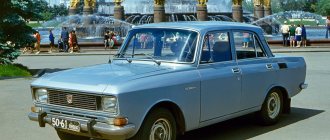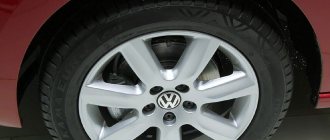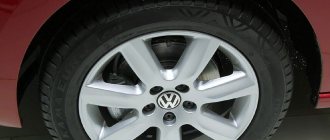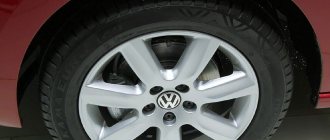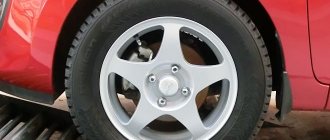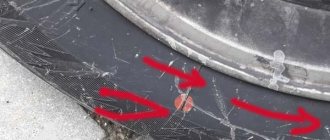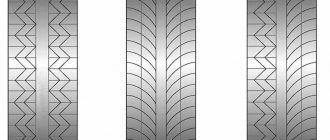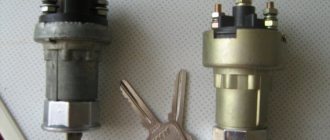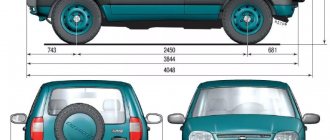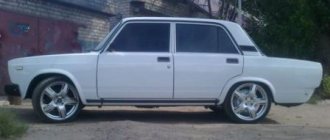Moskvich Ivan Kalita, Duet coupe
Probably the strangest model of the late 90s is the Duet coupe, which is a two-seater version of the Kalita. A budget option was also created based on the “Prince Vladimir” model. Of course, there was no demand for this “miracle”. Probably the strangest model of the late 90s is the Duet coupe, which is a two-seater version of the Kalita. A budget option was also created based on the “Prince Vladimir” model. Of course, there was no demand for this “miracle”.
In February 1996, the conveyor was stopped. The following year, the “forty-one” was modernized - the design of the front end changed. The updated car received the name “Svyatogor”. Some of the cars were equipped with a two-liter 113-horsepower Renault F3R engine, familiar from the Renault Laguna. In addition to the engine, Svyatogor acquired an imported clutch and brake booster. But again external factors intervened. The 1998 default hit the plant hard: the purchase of imported components led to huge losses. The agony of the 41st continued.
And even in these conditions, the plant could have a future. Indeed, in the second half of the nineties, Moskvich received the support of the Moscow government. But the plant management failed to properly manage the funds received. Instead of bringing the quality of the 41st to the required level, all efforts were thrown into the appearance of a whole army of “freaks”: “Yuri Dolgoruky”, “Prince Vladimir” and the tacky “Ivan Kalita”, which cost fabulous money. And also a modification of the Duet with a coupe body. But there was no demand. Even from the Moscow government.
The result is logical - production has been steadily declining and by 2001 it had dropped to 800 cars per year. On March 4, 2002, the conveyor was stopped and the power supply to the plant was cut off. No more cars under the Moskvich brand came off the Moscow assembly line. It's a shame, because initially the 41st Moskvich was a very good car. He aimed at an empty niche between the Volga and Samara. It was necessary to establish work with suppliers, improving quality, and bring new engine production to fruition. However, history decreed otherwise, and today Dusters and Captures are assembled on the territory of the former Moskvich. And Moskvich himself joined the list of brands that have sunk into oblivion.
Moskvich-2141: Moscow Simka
Other parameters of Moskvich 2141:
| General parameters of Moskvich 2141 wheel bolts | |||
| General view General view of wheel bolts | Quantity (units) Number of fasteners per hub for Moskvich 2141. | ||
| Dimensions (mm) Metric Fastener Size: Thread M14 x 1.5 means: M14 – thread diameter 14 (mm); 1.5 — thread pitch (distance between adjacent threads). | General form Wheel mounting type: To fasten wheels or disks, 2 main types of fasteners are used: - wheel bolts; -wheel nuts. | ||
| (bolt drawing) | — | M14x1.5 | Bolt |
| Wheel bolt size tables Moskvich 2141 | ||||
| Year | Quantity (units) Number of fasteners per hub for Moskvich 2141. | |||
Caution: the above data are the official figures of the manufacturer, however, please note that the information is for reference only and does not guarantee absolute accuracy.
Selection of rims for Moskvich 2141
However, popular modern cars are not equipped with wheels of this size. The closest to these indicators are common disks with a PCD of 114.3 mm. Japanese and Korean cars are equipped with such wheels, for example, some Mazda, Mitsubishi, Hyundai models.
The existing difference of 0.7 mm in the diameter of the circle where the fastening bolts are located can be neglected, since each hole is shifted relative to the center by 0.35 mm, which is compensated by the conical fit of the fastening nuts. If the wheel offset is greater - for example, 35 mm, it turns out to be recessed 5 mm into the “depth” of the arches, due to which the low “Moskvich” cutouts (at the rear) do not interfere with the normal rotation of the wheels. It is not recommended to use wider tires, since in this case the gap between the rear wheel and the spring on one side, and the wing on the other, will be unacceptably small. However, finding wheels less than 5.5 inches wide will not be easy, since five-stud hubs today are only equipped with heavy and powerful cars, which are not equipped with narrow wheels.
Moskvich-412 – video test drive
Muscovites did not copy the Bavarians - they only adopted a number of advanced solutions. An aluminum cylinder block, hemispherical combustion chambers, and an overhead camshaft with a chain drive provided advanced, by world standards, power output. Thanks to replaceable cylinder liners, during a major overhaul the engine did not need to be bored using complex equipment—it was enough to just replace the liners. The full bearing crankshaft ensured smooth operation and low noise. In addition, the engine had an unusual layout with an inclined cylinder block for compactness and a lower center of gravity.
For the first time in the USSR, this engine was equipped with a quick-change air filter, which every car now has. The engine design was fine-tuned on the Moskvich-G4 M racing car. Master of Sports V. Shchavelev took 4th place in it at the 1966 USSR Championship in circuit racing. The Moskvich-412 car was not a replacement for the Moskvich-408, but a slightly belated luxury version. Compared to the basic version, acceleration, efficiency, and top speed have improved. Moskvich-412 remained the fastest production Soviet car until the appearance of the VAZ-2103 in 1972.
Moreover, MZMA's developments in the field of engine building influenced the work of the new Volzhsky Automobile Plant. At the insistence of Moscow engineers, who were involved in the evaluation and modernization of the Fiat 124 (the future VAZ-2101), Fiat agreed to rework the engine from a lower camshaft to an upper one, that is, to modernize it. A more powerful engine required changes to other components of the Moskvich-412 compared to the 408. For the first time in the USSR, the 412th had a gearbox with a floor lever and synchronizers on all four stages, and a hydraulic vacuum brake booster.
There was a catastrophic shortage of “Muscovites”, so since 1967 their production was also mastered at. Since that time, the evolution of the model has proceeded independently in Moscow and Izhevsk. For example, it was believed that Izhevsk “Moskvich” cars had a higher build quality. But the Moscow “Moskvich-408” and “Moskvich-412” were modernized in 1969 to meet European safety requirements, receiving a new body with a different power structure, a safety steering column, separate front seats, seat belts, soft interior trim, and a rear mirror view with night mode and other improvements. At the same time, rectangular headlights of European standard began to be installed on Moskvich. It must be said that VAZ introduced similar headlights only in 1979.
Moskvich-412 became the first Soviet car to pass a crash test in France. Not only VAZ, but also MZMA/AZLK widely used foreign developments. Thus, the Moskvich-412 had a licensed clutch with a diaphragm spring (for the first time in the USSR) and a brake system developed in England. Moreover, in the early 1970s. Both AZLK and Izhmash were completely rebuilt to Renault assembly technologies, after which they reached a capacity of up to 200 thousand units. per year each. Until the mid-1970s. Moskvich-412 sold well all over the world, not least due to its sporting fame. Sales increased sharply after the 1968 London-Sydney rally, in which the Soviet car showed its reliability. The success of the Moskvich is primarily associated with a reliable and unpretentious design with a large margin of safety. Moskvich-412 became the last car from the USSR to achieve success in world sports.
The model was produced at AZLK until 1976 and came off the assembly line almost simultaneously with the “junior” Moskvich-408. By this time, the car had lost ground both in sports and in exports. Over the years, foreign dealers made more and more of their own modifications to make Soviet cars meet the requirements. As for Izhmash, which worked mainly for the domestic market of the country, it produced its version of the 412 until 1994.
What is the bolt pattern on the Audi 80?
Disc drilling parameters are usually called bolt pattern:
| Make model modification Auto | Year of issue | Bolt pattern LZ*PCD |
| Audi 80 1.8E B3 | 1991 | 4X108 |
| Audi 80 1.8E B3 | 4X108 | |
| Audi 80 1.8E B3 | 1990 | 4X108 |
| Audi 80 1.8E B3 | 4X108 |
Do-it-yourself tuning Moskvich 412: selection of photos
In order for you to figure out whether you can do the tuning on your Moskvich 412 yourself, an example is given below. One car owner purchased the above-mentioned 1981 car in poor condition and began remodeling it.
The gearbox was taken from a Chevrolet Niva 0.83 with fifth gear. I lightened the elbow in the engine by 2 kg, then installed a stationary one with counterweights. I didn’t touch the connecting rods: if you don’t have accurate scales, then you shouldn’t meddle. I cut off the skirts and piston bottom by 2 mm (measurements were taken using water and a syringe). I installed a piston from a Volga with a coating. I filed the head down to 1.7 mm. I bored out the channels so that the standard ones ran along the entire length. I left the valves standard with an intake of 39.5. 78 camshaft Zhiguli springs, classic; 2 mm washers under the springs. Reduced the weight of the valve plate. Chamfer – 30 degrees. I cut off the guides in the channels. I cut the gear. Flywheel 4 kg. I installed 2 horizontal carba-solex (magpies). Engine tuning is ready. Volume came out 1.9, power - 125 hp
To make car repairs easier, pay attention to the photo:
Replacing original wheels Moskvich-2141
Many owners are thinking about replacing standard Moskvich-2141 wheels with models from other cars or completely new ones. And the reason here is not only the desire to tune your car, but also the difficulties in finding “original” parts. And in markets and stores today they offer a wide range of products, both new and used, both steel and light alloy. But you need to figure out what kind of wheels can be installed on the Moskvich-2141 so that there is no harm to traffic safety.
The manufacturer gave the following recommendations regarding wheels for Moskvich-2141 . Tire sizes are 165/80 R14, 175/70R14, 185/70R14 and 185/65R14. In this case, steel wheels must have a 5J rim with an ET offset of 45 mm. A 5.5J rim with a 42mm offset is also allowed. Alloy wheels for Moskvich-2141 must have a 5.5J rim and an offset of 37 mm or a 6J rim and an offset of 33 mm. Note that the plant also allows the installation of tires 175/65 R15, as well as 185/65R15. In this case, the wheels must be 5.5J or 6J, and the offset must be 42 mm. It is worth paying attention to one nuance. If wheels are installed on a Moskvich-2141 with a profile width of 185 mm, such a wheel may not be mounted in the “original” fastener for the “spare tire” or in the niche for it.
Tires and wheels
The car is equipped with radial tube tires measuring 165/80R14 model MI-180, having a 2-layer sidewall frame and a 2-layer metal belt. The tires are equipped with wear indicators in the form of six transverse stripes 1.6 mm high, evenly spaced around the circumference of the tire along the bottom of the tread pattern grooves. When the tread wears down to a height of 1.6 mm, wear indicators appear in the form of six transverse stripes, which indicates the maximum wear of the tires and the need to replace them with new ones.
When replacing tires, wear or failure, the following is unacceptable:
- install tires of different sizes and models (tires with different types of tread patterns) both on one axle and in pairs along axles;
- install any other camera other than the UK-14M into the 165/80R14 tire of the MI-180 model;
- categorically install tires of size 185-14/7.35-14, as well as 205/70Rl4, which have a significantly larger width;
- replace valve spools of various types of tires with plugs, as well as operate the tire without a protective cap (valve key);
- remove a tire whose air pressure is higher than the ambient pressure.
The vehicles are also equipped with radial tubeless tires of size 175/70R14. Their use increases the safety of vehicle operation in the event of a sudden tire puncture due to the presence of an internal sealing layer, which slows down the drop in pressure during a puncture. However, the use of tubeless tires places increased demands on the wheel rim (5JX 14H) used on the vehicle. Before installing tubeless tires, the wheel rim must be thoroughly inspected and repaired. After padding, straightening and painting, the rim must be sealed. The landing flanges of the rim and the “stream” located between them should not have any irregularities, nicks, dents, weld beads or paint defects.
The presence of the noted defects can cause a loose fit of the sealing layer, which is also applied to the beads (“heels”) of the tubeless tire, which will lead to depressurization of the tire.
After straightening the rim on the wheel, the radial and lateral runout of the landing flanges should be checked (see Figure 5.26).
A tubeless tire should be mounted in such a way as to prevent the mounting blade from damaging the sealing layer on the beads. Initially, tubeless tires are inflated with a compressor, for example, at car service stations or tire repair shops.
The tire pressure of the front and rear wheels should be 1.9-2.0 kgf/cm². If the tire pressure has decreased and the beads are sitting on the flanges of the wheel rim, then you can inflate the tire with a hand pump. If the tire's internal pressure drops, do not allow the tire bead to move away from the wheel rim flange.
If it is necessary to inflate (in the absence of a compressor) a tire whose beads are not adjacent to the rim flanges, it is recommended to do the following: tie a loop from a strong rope slightly larger than the outer circumference of the tire, and put it on the tire in the middle of the tread pattern; pass some strong rod under the rope and twist it so that the tire sides are pressed tightly against the rim flanges; Gradually inflate the tire and loosen the loop evenly as the tire pressure increases, keeping the tire upright the entire time.
If it is necessary to remove the valve from the wheel, push its body with force into the hole of the rim, while squeezing the outer sealing collar with a screwdriver that does not have sharp edges. Repair of tubeless tires is carried out using a special first aid kit, sold in stores, according to the instructions supplied with it.
The car can be equipped with foreign tires - size 165/80R14 models XZX, ZX and MX; "Pirelli" - dimension 165/80R14 model RZ and dimension 175/70R14 model P4.
Wheel cover installation
The car is equipped with plastic wheel caps with the emblem of the car manufacturer. To fasten the cap 1 (see Figure 5.31) to the wheel 4, a latch and a spring are used.
Figure 5.31. Wheel cover installation:
- a) the position of the cap relative to the spring before slamming;
- b) position of the installed cap.
The cap retainer 2 is inserted before installing the wheel into its central hole and when the wheel is secured with bolts 5, the retainer flange is pressed by the wheel disk to the hub flange.
Spring 3 for fastening the cap is installed in the grooves of the retainer so that it, bent from the common plane, faces the wheel and rests against the wall of the retainer.
Article rating:
What wheels can be installed on Moskvich 2141 Link to main publication
Related publications
BMW 1 series 2022 price
